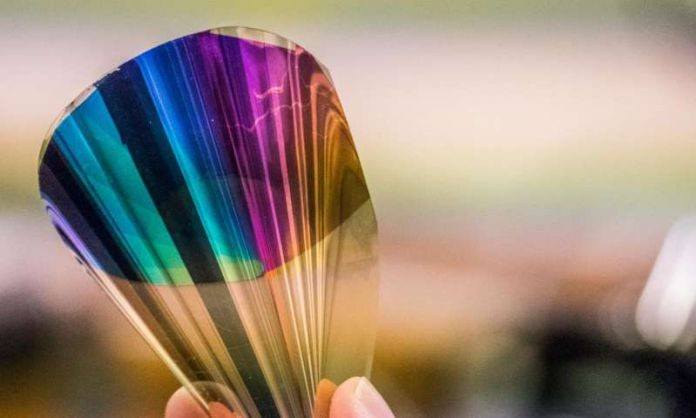Scientists from the Chalmers University of Technology have developed a new bendable electronic paper. This bendable electronic paper is less than a micrometre thin flexible. It gives all the colours that a standard LED display does. The paper is similar to the Kindle tablet but still require ten times less energy than the tablet.
While placing conductive polymers on nanostructures, scientists discover that the combination will perfectly suit to create electronic displays as thin as paper. After a year, the results was ready for disclosure.
It is based on the polymer’s ability to manipulate light absorption and reflection. The polymers that cover the whole surface lead the electric signals within the full display. Although, this electronic paper is not still ready for application. Scientists have built and tested some pixels with red, green and blue colour. The results so far have been positive what remains now is to build pixels that cover an area as large as a display. The results so far have been positive, what remains now is to build pixels that cover an area as large as a display.
Andreas Dahlin, Chalmers researcher said, “It isn’t lit up like a standard display. But it rather reflects the external light which illuminates it. Therefore it works very well where there is a bright light. For example out in the sun, in contrast to standard LED displays. LED displays work best in darkness. At the same time, it needs only a tenth of the energy that a Kindle tablet uses. Actually,it uses much less energy than a tablet LED display.”
“We are working at a fundamental level. But even so, the step in manufacturing a product out of it shouldn’t be too far away. Now we only need engineers,” he added.
But there is a problem of using Gold and Silver in displays, is that it make manufacturing expensive. The gold surface is 20 nanometres thick so there is not that much gold in it.
Andreas said, “But at present, there is a lot of gold waste in manufacturing it. Either we reduce the waste or we find another way to decrease the manufacturing cost.”
According to scientists, the best applications for displays will be well-bright places. For example, outside or in public places to display information. This could reduce the energy consumption. At the same time, it replaces signs and information screens that are not currently electronic today with more flexible ones.
